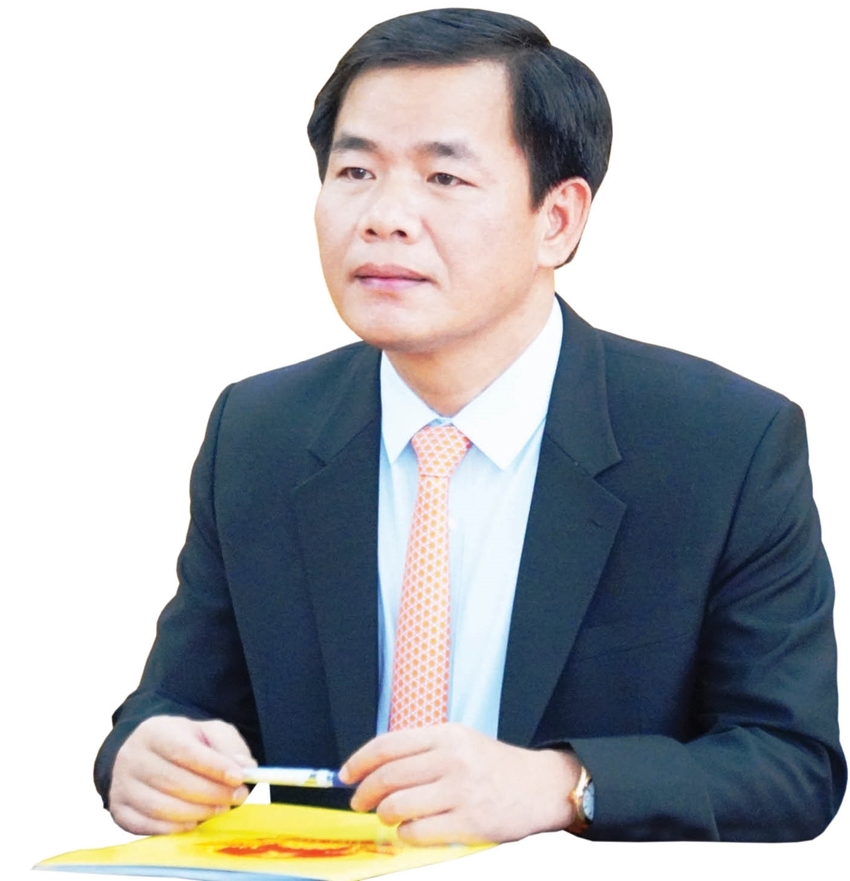    |
 |
| Deputy Secretary of the Provincial Party Committee, Chairman of the Provincial People's Committee Nguyen Van Phuong. Photo: NGOC HIEU |
At the 11th Conference of the Provincial Party Committee (XVI term), the UMP was approved by the Standing Board of the Provincial Party Committee, with an expectation for being submitting to the Ministry of Construction for its appraisal in June 2023 and submitting to the Prime Minister for an approval in October 2023.
On October 19th, 2022, the Prime Minister approved the task of Thua Thien Hue UMP to 2045, with a vision to 2065, which is the basis for the province to complete the UMP. So, how did the implementation process take place, sir?
The Provincial People's Committee has directed relevant agencies and units to coordinate with the consulting unit to complete the content of the UMP, consult agencies, units and citizens about their comments on the UMP, consult localities through a conference on March 22th, 2023, and collect opinions from experts in and outside the province through a workshop on April 1st, 2023.
Many opinions of central leaders and leading experts in Vietnam have contributed to completing the content of the UMP. All opinions were towards building the whole province to a centrally-governed city.
The Standing Board of the Provincial Party Committee also had a meeting for the Designated Representation of the Provincial People’s Committee to report on the UMP and received comments and suggestions. After that, the Department of Construction and the consulting unit acquired and completed the planning content.
Currently, the UMP has been approved by the Standing Board of the Provincial Party Committee with the goal that by 2025, Thua Thien Hue will become a centrally-governed city on the foundation of preserving and promoting the values of the ancient capital and Hue cultural identity, with characteristics of culture, heritage, ecology, landscape, environmental friendliness and smart city.
By 2030, Thua Thien Hue will be one of the major and distinctive hubs of Southeast Asia in terms of culture, tourism and specialized healthcare; one of the country’s major hubs for science and technology, high-quality, multi-disciplinary, multi-sector education and training. People's material and spiritual life will reach a high level. By 2045, Thua Thien Hue will be a Festival city and an Asia’s distinctive cultural, educational, tourism and specialized medical center.
Forming the right development strategy is a key factor in the process of completing the UMP. So, what is the development strategy of the province in this planning?
The province sets out five basic development strategies, including promoting regional and intra-regional transport connectivity; arranging and organizing urban space, upgrading the urban and restructuring its territory; focusing on developing infrastructure for areas functioning as driving forces for the economic development; forming green space and drainage system, developing ecological housing for climate change response; forming a new development area to the West to create a connection to the East-West economic corridor and the fund for long-term reserve land.
Hue, as a centrally-governed city and a heritage city, necessarily promotes its position and influence on neighboring cities through infrastructure links. In particular, it is essential to continue the preservation of valuable spaces instead of letting the development create unfavorable pressures, and at the same time to create new fiscal space for economic and cultural activities, and to establish specific characteristics for the central urban area.
In addition, the infrastructure quality is a breaking point for development and a basis for promoting investment in forming green space for the central urban area, that plays a role of a belt for controlled development to serve as a space for entertainment activities and urban restoration.
A new UMP will create a more realistic urban model. What is the urban development orientation of the province in the planning, sir?
Thua Thien Hue urban model will be an urban chain along the North-South economic spatial axis, associated with national transport routes such as the North-South expressway, the high-speed railway, the National Highway 1A, the National Highway 49, and the coastal road of Thua Thien Hue. The priority spatial development direction will be towards the Tam Giang - Cau Hai lagoon (urban city on the sea). Belt roads of the central urban area, centripetal roads connecting with satellite towns and urban areas of district will be clearly formed.
In addition, the province will develop on the basis of in-depth preservation of relics and cultural heritage areas, including relic space, relic works and organizing cultural activities associated with relics. Selective and harmonious exploitation will be considered, with a prioritization to add value to the natural landscape areas of Tam Giang lagoon, Cau Hai lagoon, Lap An lagoon, marine tourism spaces and mountain tourism.
Particularly for the central urban area, could you help people visualize its future shape?
The central urban area will comply with the orientation of the boundary and the spatial development direction of the whole urban area of Thua Thien Hue.
The preservation spaces include the Citadel, the old quarters, the two sides of the Huong River, and relics that have been ranked for landscape preservation and development, affirming the uniqueness of Hue culture.
In addition, the province will review, renovate, supplement and upgrade infrastructure for old residential areas to meet the criteria for the urban grade I. New residential areas must meet the criteria for the urban grade I. And at the same time, the province will use land economically, in harmony with the urban transport plan as well as the flood prevention plan of each sub-region.
We will also reserve land funds for economic development such as Thua Thien Hue IT zone, commercial and service areas, night streets… and land funds for education, culture and sports.
The province will continue to implement projects related to relocating citizens and public facilities out of the conservation area of Hue Citadel, and projects on urban service development, technical infrastructure and social infrastructure.
Thank you, Sir!
